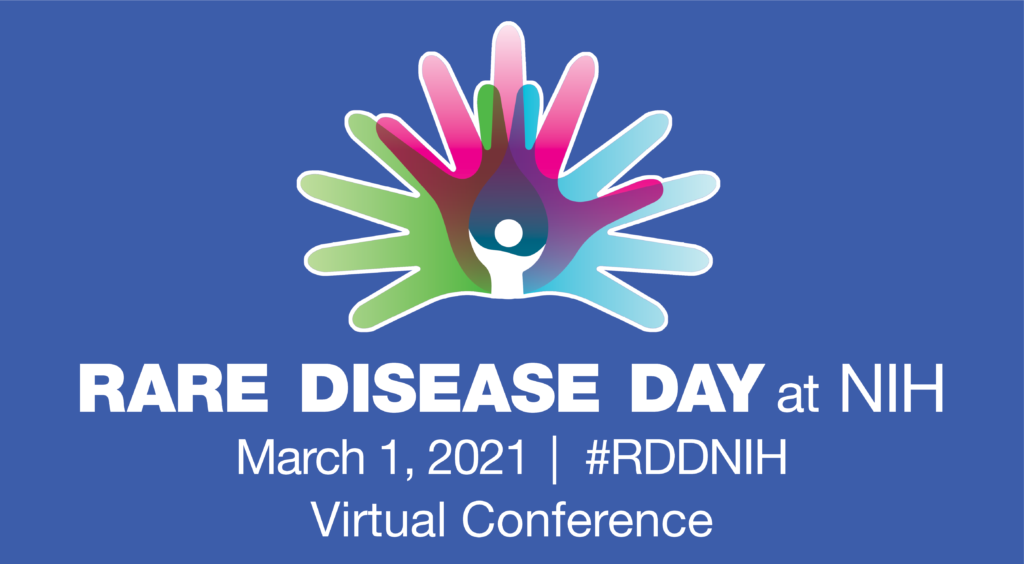#ScienceSaturday posts share relevant and exciting scientific news with the KAND community. This project is a collaboration between KIF1A.ORG’s Research Engagement Team Leader Alejandro Doval, President Kathryn Atchley, Science Communication Associate Aileen Lam and Chief Science Officer Dr. Dominique Lessard. Send news suggestions to our team at impact@kif1a.org.
In Case You Missed It!
Over the past week KIF1A.ORG has been represented at multiple Rare Disease Day 2021 events, including 24 Hours of Rare’s “Teaming up on Single-Gene Diseases: A Collaborative Approach to Treatment” panel (must register to view) and the National Institutes of Health’s “Using Health Literacy to Elevate the Rare Diseases Community and Enhance Research” panel (starting at timestamp 3:42:58). Click the buttons below to have a watch!

Recent KIF1A-Related Research
IMPROVING MITOCHONDRIA AND ER STABILITY HELPS ELIMINATE UPPER MOTOR NEURON DEGENERATION THAT OCCURS DUE TO MSOD1 TOXICITY AND TDP-43 PATHOLOGY
A hopeful discovery has been made for patients in the rare disease community affected by Amyotrophic Lateral Sclerosis (ALS), Hereditary Spastic Parapalesia (HSP), Primary Lateral Sclerosis (PLS), and Frontotemporal Lobar Degeneration (FTLD)! Dr. Özdinler, one of the outstanding researchers in our KIF1A Research Network, and her colleagues have identified a compound, NU-9, that prevents the degeneration of upper motor neurons (UMNs) that occurs from misfolded superoxide dismutase protein (mSOD1) toxicity and TDP-43 pathology. To unpack that sentence a little bit, UMNs are neurons that send messages between the brain and the spinal cord. Damage to these UMNs is common in diseases like ALS and can result in spasticity or exaggerated reflexes. Two proteins in our nervous system that are known to act dysfunctionally in ALS are mSOD1 and TDP-43. Both of these proteins are prone to aggregation, or the irregular and sometimes damaging accumulation of proteins, leading to diseased forms of UMNs seen in patients with ALS, HSP, PLS, and FTLD.
In this article, researchers discuss how NU-9 helps to eliminate the UMN degeneration caused by mSOD1 toxicity and TDP-43 pathology. Scientists observed that this compound reduced the amount of mSOD1 in UMNs and stopped the ongoing deterioration of UMNs from TDP-43 pathology. Together, these effects improved the structural stability of critical cellular components, the mitochondria and ER, which helped to improve the function of UMNs.
NU-9 was previously known for reducing protein aggregation in cell lines, crossing the blood brain barrier, and having low toxicity and favorable drug-like properties, but is now characterized by its added ability to stabilize UMNs and prevent its degradation. Overall, this paper highlights the importance of UMN studies and identifies via a mechanism-focused and cell-based drug discovery approach the first known compound to improve diseased UMN health. UMN degeneration is seen commonly amongst many rare neurodegenerative diseases such as KAND, so these findings can be further explored and potentially applied to a broader spectrum of patience with similar disorders. To read more about this incredible study, check out the article and video below!
Rare Disease News
Timothy Syndrome Alliance: Rare Strikes Back
What has the rare disease community lost and gained over the past year of the COVID-19 pandemic? Watch this video from the Timothy Syndrome Alliance to find out. This short and impactful video shares powerful statistics, insights and future projections for the rare disease community, highlighting an important take home message: we are stronger together.
ENDOGENOUS MECHANISMS OF NEUROPROTECTION: TO BOOST OR NOT TO BE
When thinking about neurological diseases and how to treat them, one approach could target specific disease-causing pathways that are common routes of disease progression. In the context of KAND, a symptom that some patients experience is peripheral neuropathy, which is weakness, numbness and/or pain in the hands and feet caused by damage to the peripheral nerves. A potential solution to this problem could be to halt the disease-causing pathways involved in this process to prevent neurodegeneration. But, what if instead we took an opposite approach and enhanced mechanisms that can increase neuronal growth and protect against deterioration? This article centers around this concept of boosting neuroprotective events in the nervous system, as the authors of this article explore different pathways already existing in the body that can protect and promote neuronal survival. As KAND is a neurodegenerative disease, learning about ways to improve neuronal health and prevent neurodegeneration could be very beneficial when considering new therapeutic avenues.
The main causes leading to neurodegenerative disorders that are discussed throughout the article are poorly functioning mitochondria, dysregulated removal of unnecessary proteins, and incorrect activation of responses to unfolded protein. Additionally, the authors discuss the importance of programmed cell death, microtubule dynamics and motor protein function, and the interaction between the cell and its environment on neuronal survival.
From this, this article highlights that an effective neuroprotectant would be one that regulates these pathways and restores their function in order to prevent neurodegeneration. In addition, it is suggested that overexpression of certain proteins could help enhance these processes to protect against neuronal death and that having a drug targeting multiple mechanisms at a time to boost survival would be more effective. Overall, this discussion of enhancing forms of neuroprotection is an exciting therapeutic avenue to further explore as potential treatments for neurodegenerative diseases like KAND. By focusing on modulating and progressing the pathways in the body that are affected by neurodegenerative disorders, this could be an optimal strategy to restore function by countering neurodegeneration. Want to read more about the specific proteins involved and how these researchers propose we approach future studies? Check out the article below!

